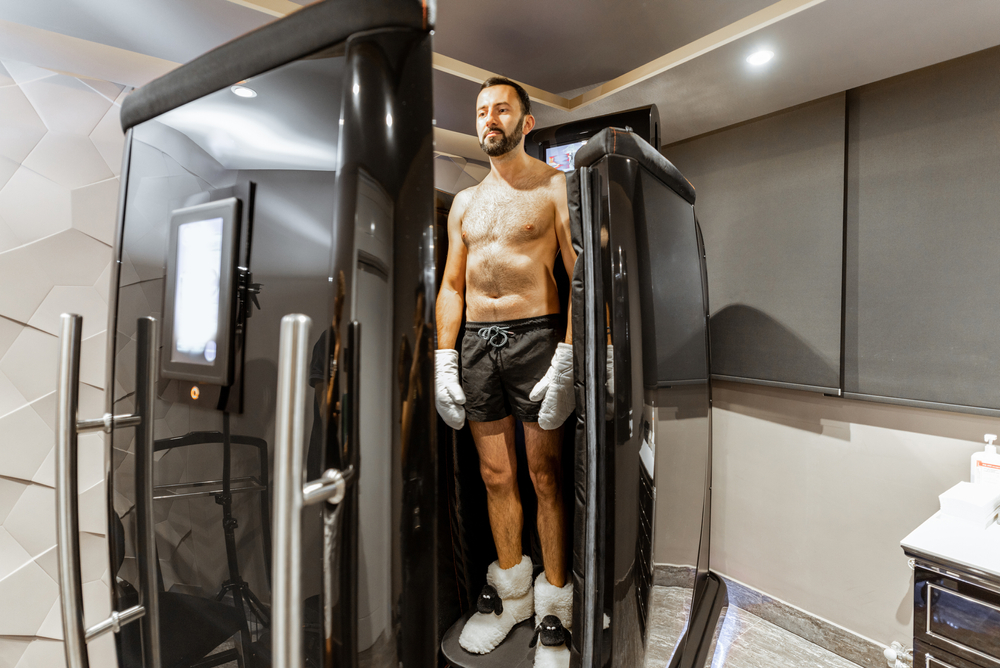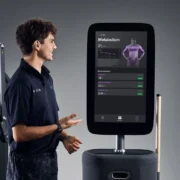Cryotherapy Benefits: What Science Says About Extreme Cold

Cryotherapy seems promising for pain relief and recovery, but less-extreme versions of cold immersion may offer the same benefits
Whole-body cryotherapy has grown in popularity with athletes, celebrities and recently, with fitness and wellness enthusiasts.
Whole-body cryotherapy is different from traditional cryotherapy. Area-focused cryotherapy has been used for 100 years and is a common practice in removing warts. This is a certified and commonly used treatment in dermatology. Whole-body cryotherapy is different.
Whole-body cryotherapy is when you enter a chamber that’s often well below negative-220 degrees Fahrenheit for about 3-4 minutes. For reference, this is about 10 times colder than Antarctica. During this practice, you’ll have gloves on, a mask for your ears and nose, as well as shoes and socks.
These cryochambers first popped up in Japan as a method to treat rheumatism. Today, people use these chambers for their purported health benefits. We’ll explore if the benefits of cryotherapy are worth the sacrifice of entering a chamber colder than Antarctica.
Are the Supposed Benefits of Cryotherapy Backed by Science?
Whole-body cryotherapy has been claimed to lower inflammation and help decrease feelings of pain, specifically in those with arthritis, multiple sclerosis and other autoimmune diseases. It’s also currently used to help athletes recover. This is because it may trigger a parasympathetic response after training.
Pain Relief
Theoretically, the cold in cryotherapy stops pain perception in the joints by slowing down the flow of blood to the area. Additionally, it would decelerate nerve signaling in pain fibers which would provide pain relief.
One study showed that in those with ankylosing spondylitis, an inflammatory disease, whole-body cryotherapy did provide pain relief. The jury is still out on if it provides pain relief for other types of inflammatory diseases like rheumatoid arthritis.
We should also consider how whole-body cryotherapy compares to traditional forms of cold therapy like ice packs and water immersion. For example, this study compared ice application verse whole-body cryotherapy in those with osteoarthritis. The results were that both methods amounted to significant pain relief.
Perhaps the bigger question is whether cryotherapy is better than cold water immersion or specific ice application.
Whole-Body Cryotherapy vs. Cold Immersion
When someone does whole-body cryotherapy they wear gloves, socks and shoes due to the extremely cold temperatures. The purpose of any cold therapy is to lower your body temperature in an effective way. We know that the skin on the hands and feet should be subjected to the cold if the purpose is to cool the body. You can read more about that here. However, with whole-body cryotherapy, the hands and feet need to be covered to prevent damage or injury.

We can thank physics for the fact that cold air is not nearly as effective as cold water in transferring heat. Studies have shown that whole-body cryotherapy, because it is air-based, is not as effective in lowering temperatures as cold water or ice packs. This doesn’t mean that whole-body cryotherapy won’t lower your temperature, but it does mean it may not be as successful at it as using water or ice.
Recovery in Athletes
There are varying results on whether whole-body cryotherapy is more effective than cold water immersion at helping recovery in athletes. Cold exposure shifts the blood flow from your peripheries toward your core, which can help trigger parasympathetic responses. In athletes, triggering a parasympathetic response is sought after for maximum recovery. It’s unclear if whole-body cryotherapy or cold water immersion is better at achieving this shift.
Is Cryotherapy Worth It?
Whole-body cryotherapy costs anywhere from $60-$100+ per session and there isn’t great empirical evidence that it’s better than cold water immersion.
However, there still hasn’t been enough research done comparing cryotherapy to other forms of cold therapy. Research in this area is difficult as it is hard to get a good placebo. As you can imagine, it would be difficult to “fake” putting someone in very cold temperatures.
If you feel significantly better after whole-body cryotherapy, then the practice may be worth it for you.
This article is for informational purposes only and shouldn’t be used without the advice of your doctor. It does not claim to treat or cure health conditions.



